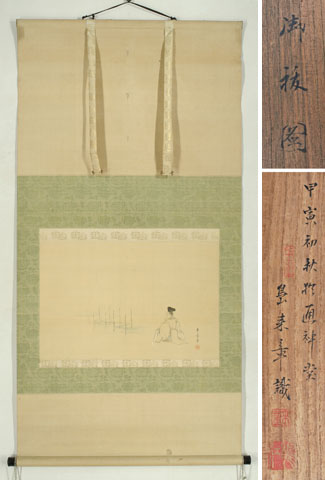Shijô
MisogiSigned: Raishô hitsu
Seals: Raishô
Technique: colours on silk 33.5 x 50.5
Date: early autumn 1854
Mounting: green damask and beige silk 125.5 x 63.3
Box: signed
Condition: wormage at the top and damaged at the bottom of the mounting, otherwise good
Misogi is a Shinto purification ritual, often performed at sacred waterfalls, lakes and rivers.
Raishô was born in Ôtsu and he was a pupil of the influential Nangaku and later of Maruyama Ôzui (1766-1829). He was an important painter, who attracted equally important students like Konô Bairei (1844-1895) and Kawabata Gyokushô (1842-1913). On January 17th 1868 the art organization the Joun-sha was founded, with Raishô as their oldest core member.
With Yokoyama Kazan (1784-1837), Shiokawa Bunrin (1801-1877) and Kishi Renzan (1805-1859), Raishô was considered one of the four great masters of Kyoto at the end of the Edo period.
Reference:
Roberts p. 127
Araki p. 1203
Kyoto '98 p. 288
Hillier pp. 332-335
Price: SOLD

